Table of Contents
This comprehensive guide equips nurses with the knowledge and skills to excel in documentation. It emphasizes the legal, ethical, and clinical importance of accurate and thorough charting, ensuring patient safety, optimal care delivery, and safeguarding nurses from legal repercussions.
The Power of the Pen: Why Documentation Matters in Nursing
In the fast-paced world of healthcare, meticulous documentation serves as the cornerstone of effective patient care. It’s more than simply recording events; it’s a critical communication tool, a legal safeguard, and a window into the quality of care provided. This guide empowers nurses with best practices for documentation, ensuring:
- Patient Safety: Clear documentation minimizes errors, facilitates communication, and ensures continuity of care.
- Quality of Care: Detailed records allow for tracking patient progress, identifying potential issues, and adjusting treatment plans.
- Continuity of Care: Comprehensive documentation ensures a smooth handover of information between nurses, physicians, and other healthcare professionals.
The Price of Neglect: Consequences of Poor Documentation
Conversely, inadequate documentation can have serious consequences:
- Delayed or Missed Diagnoses: Crucial information gaps can hinder timely diagnosis and treatment interventions.
- Medication Errors: Ambiguous documentation can increase the risk of medication errors, potentially harming patients.
- Negative Patient Outcomes: Poor communication and lack of clear care plans can negatively impact patient recovery and well-being.
- Legal Issues: Inaccurate or missing documentation can expose nurses to disciplinary action and even malpractice lawsuits.
By understanding the significance of documentation, nurses can embrace best practices and ensure their charting reflects the high quality of care they deliver.
Building a Solid Foundation: Essential Elements of Effective Documentation
Documentation Best Practices for Nurses emphasizes the importance of building a strong foundation for your charting habits. Effective documentation relies on key principles that ensure information clarity, accuracy, and completeness.
Focus on the Facts: Charting by Exception and Objective Data
- Charting by Exception: This principle encourages documenting deviations from the patient’s normal baseline or expected care plan. Instead of listing every routine vital sign measurement within normal limits, focus on documenting when vital signs deviate from the norm. This approach streamlines documentation and highlights areas requiring closer attention.
- Objectivity is Key: Documenting observations and findings in a neutral, objective manner is crucial. Avoid using subjective interpretations or emotional language. Instead of stating, “The patient seems anxious,” focus on objective observations, such as, “Patient reports feeling restless and unable to relax.”
Speaking the Same Language: Standardized Tools and Terminology
- Standardized Tools: Many healthcare facilities utilize standardized assessment tools for specific patient populations or procedures. Using these tools promotes consistency and facilitates communication among healthcare professionals. Documentation Best Practices for Nurses emphasizes the importance of understanding and adhering to facility-specific standardized tools.
- Standardized Terminology: Employing standardized nursing terminology (e.g., using terms from the Omaha System or Nursing Interventions Classification) ensures clear communication and avoids ambiguity in the documentation.
The Art of Communication: Using SBAR for Clarity
- The SBAR Framework: The SBAR (Situation, Background, Assessment, Recommendation) framework offers a structured approach for communicating patient information clearly and concisely. This framework can be particularly helpful when documenting handoff reports, critical incidents, or consultations with other healthcare professionals.
Time is of the Essence: Timeliness, Accuracy, and Completeness
- Timeliness: Documenting care as close to the time it is provided minimizes the risk of errors due to fading memory. Documentation Best Practices for Nurses emphasizes integrating documentation into your workflow to ensure timely entries.
- Accuracy: Double-check all information before finalizing entries. Accuracy is paramount to avoid confusion and potential errors in medication administration or treatment plans.
- Completeness: Document all relevant aspects of patient care, including assessment findings, interventions performed, patient responses, and education provided. A complete picture allows for optimal continuity of care.
Putting it into Practice: Examples of Effective Documentation
- Assessment Findings: “Patient reports sharp, stabbing pain (7 out of 10 on the numeric pain scale) in the right lower quadrant of the abdomen.” (Objective data)
- Medication Administration: “10:00 AM: Administered one tablet of Morphine Sulfate 10mg PO per physician order. Patient tolerated the medication well, no reported side effects.” (Timely, accurate, and complete)
- Patient Education: “Educated patient on deep breathing exercises for pain management and provided written instructions.” (Complete)
By adhering to these essential elements, nurses can lay a solid foundation for effective documentation that promotes patient safety, clear communication, and high-quality care.
Navigating the Legal and Ethical Landscape: Documentation Best Practices for Nurses

Documentation Best Practices for Nurses extend beyond technical skills. Understanding the legal and ethical considerations associated with charting empowers nurses to protect themselves and their patients.
The Price of Inaccuracy: Legal Implications of Poor Documentation
Only accurate or complete documentation can have significant legal repercussions. Nurses who fail to adhere to documentation best practices may face:
- Malpractice Lawsuits: If inadequate documentation contributes to a patient injury, nurses could be named in malpractice lawsuits. Clear and accurate records can help defend against such claims.
- Disciplinary Action: State nursing boards may take disciplinary action against nurses for violations of documentation standards. This could include reprimands, license suspension, or even revocation.
A Medico-Legal Lifeline: Documentation as Evidence
Detailed and accurate documentation is a medico-legal record, playing a vital role in legal proceedings. In the event of a lawsuit, thorough charting establishes the standard of care provided and the rationale behind nursing actions. Documentation Best Practices for Nurses emphasize the importance of maintaining objective and factual records to support the quality of care delivered.
Confidentiality: Protecting Patient Privacy
The Health Insurance Portability and Accountability Act (HIPAA) mandates the protection of a patient’s health information. Nurses have a legal and ethical obligation to maintain patient confidentiality in all aspects of documentation, including electronic health records (EHR).
Striking a Balance: Confidentiality vs. Completeness
While maintaining confidentiality is essential, it should not come at the expense of complete and accurate documentation. Documentation Best Practices for Nurses emphasize strategies to achieve this balance:
- Avoid using patient identifiers in non-essential communications or documentation.
- Document only relevant information about the patient’s care.
- Use secure access protocols when accessing or sharing patient information electronically.
Honesty and Objectivity: Ethical Considerations in Documentation
Ethical considerations underpin every aspect of nursing practice, and documentation is no exception. Documentation Best Practices for Nurses highlight the importance of:
- Honesty: Accurately document all aspects of care, even if they reflect poorly on the nurse or another healthcare provider. Falsifying documentation is a serious ethical violation.
- Objectivity: Avoid subjective interpretations and emotional language. Focus on factual observations and patient responses.
- Avoiding Backdating Entries: Documenting care entries when provided ensures accuracy and reduces the risk of errors.
By understanding and adhering to these legal and ethical considerations, nurses can ensure their documentation practices are not only legally sound but also reflect the ethical principles at the core of the nursing profession.
Tailoring Your Documentation: A Flexible Approach Across Settings.
Documentation Best Practices for Nurses acknowledge that charting needs may vary depending on the healthcare setting and patient population. While core principles remain constant, nurses must adapt their approach to ensure comprehensive and relevant documentation.
A Landscape of Diversity: Variations in Documentation Practices
- Hospital Setting: Acute care settings like hospitals typically require detailed documentation, including comprehensive assessments, vital signs monitoring, medication administration records, and progress notes. Documentation Best Practices for Nurses emphasize the importance of adhering to facility-specific protocols and flowsheets for standardized charting.
- Ambulatory Care: Clinics and outpatient settings may emphasize detailed charting less than hospitals. However, clear documentation of patient encounters, including history of present illness, physical examination findings, diagnoses, and treatment plans, remains crucial.
- Home Care: Home healthcare nurses document patient assessments, interventions, medication administration, and patient education provided in the home environment. Documentation also focuses on monitoring for safety hazards and ensuring continuity of care with other healthcare providers.
Catering to Specific Needs: Documentation for Different Patients
- Paediatrics: Documentation for children may require adaptations such as using age-appropriate language, incorporating parental reports, and focusing on developmental considerations.
- Geriatrics: For older adults, documentation should address the potential for cognitive decline, polypharmacy (multiple medications), and specific needs related to age-related conditions.
- Critical Care: Critically ill patients require meticulous documentation of vital signs, hemodynamic parameters, ventilator settings, and response to treatment interventions.
Setting the Stage for Success: Essential Documentation Elements
Here are some examples of essential documentation elements in specific settings:
- Pre-Operative Assessment (Surgery): Detailed medical history, physical examination findings, allergies, and informed consent.
- Discharge Instructions (Home Care): Medication administration schedule, wound care instructions, safety precautions, and follow-up appointments.
The Rise of EHR: Embracing Electronic Documentation
Electronic health records (EHR) have become common in many healthcare settings. Documentation Best Practices for Nurses emphasize the importance of:
- Understanding EHR functionalities: Familiarize yourself with the specific charting system used in your facility.
- Utilizing templates and standardized documentation tools: Many EHR systems offer pre-built templates to streamline documentation for common procedures or diagnoses.
- Maintaining conciseness and clarity: While EHRs offer more space for documentation, avoid excessive verbosity. Focus on essential information.
Adaptability is Key: Tailoring Documentation to Workflows
Nurses should adapt their documentation practices to the workflows and charting systems used in their workplaces. Documentation Best Practices for Nurses encourage collaboration with colleagues and educators to share best practices for efficient and effective EHR documentation within your facility.
By understanding these variations and adapting their approach accordingly, nurses can ensure their documentation reflects their patients’ and practice settings’ unique needs.
Conquering the Clock: Strategies for Efficient Documentation

Documentation Best Practices for Nurses acknowledge that time constraints can be a significant challenge. This section equips nurses with strategies to streamline documentation and ensure timely completion without compromising accuracy or detail.
Taming the Time Monster: Effective Time Management
- Charting Throughout the Shift: Integrate documentation into your workflow throughout your shift. Documenting observations and assessments as soon as possible minimizes reliance on memory and reduces the risk of errors later.
- Prioritizing Tasks: Learn to prioritize documentation tasks. Urgent findings or medication administration should be documented immediately, while routine assessments can be charted within a reasonable timeframe.
Streamlining the Process: Techniques for Efficient Charting
- Focus on Key Information: Document the most relevant and essential information pertaining to the patient’s condition and care provided. Avoid unnecessary details that don’t contribute to understanding the patient’s status.
- SOAP Method: Consider using the SOAP (Subjective, Objective, Assessment, Plan) charting method to organize your documentation entries in a structured and efficient manner.
- Standardized Documentation Tools: Utilize facility-approved templates and standardized documentation tools whenever possible. This saves time and ensures consistency in charting.
Clarity is King: The Art of Concise Communication
Documentation Best Practices for Nurses emphasize the importance of clear and concise communication in documentation entries.
- Use Simple Language: Avoid complex medical jargon that laypeople may not understand. Focus on clear and concise language that accurately conveys the information.
- Active Voice: Documenting in active voice promotes clarity and readability. Instead of “Wound was dressed by a nurse,” state “, Nurse dressed wound using sterile technique.”
- Bullet Points and Headings: Effectively utilize bullet points and headings to organize information within longer entries and improve readability.
Technology to the Rescue: Utilizing Tools for Efficiency
Technology can be a powerful ally in streamlining documentation. Documentation Best Practices for Nurses encourage exploring these options:
- Voice Recognition Software: Dictating your notes into voice recognition software can save time compared to traditional typing.
- EHR Templates: Utilize pre-populated templates within your EHR system to expedite documentation for standard procedures or diagnoses.
- Documentation Shortcuts: Many EHR systems offer keyboard shortcuts or other features to save time and improve efficiency.
Proofreading is Paramount: Ensuring Accuracy
Developing a habit of proofreading entries before finalizing them is crucial. Documentation Best Practices for Nurses emphasize the importance of checking for:
- Typos and Grammatical Errors: Errors can create confusion and undermine the credibility of your documentation.
- Factual Accuracy: Double-check all information documented, including medication dosages, vital signs, and assessment findings.
- Completeness: Ensure all relevant aspects of care have been documented before finalizing the entry.
By employing these strategies, nurses can conquer the time barrier and ensure their documentation is efficient and accurate, reflecting the high standards of nursing care.
The Power of Collaboration: Communication and Teamwork in Documentation
Documentation Best Practices for Nurses extend beyond individual charting habits. Effective documentation thrives on collaboration and clear communication among healthcare professionals.
A Symphony of Care: Working Together
Nurses collaborate with physicians, therapists, and other healthcare providers to deliver comprehensive patient care. This collaboration extends to documentation as well. Documentation Best Practices for Nurses emphasize the importance of:
- Sharing Information: Communicate assessment findings, interventions performed, and patient responses with other healthcare professionals involved in the patient’s care.
- Reconciling Discrepancies: If you encounter conflicting information in patient records, address it promptly and document the resolution to ensure clarity.
The Seamless Shift: Handoffs and Continuity of Care
Handoff reports during shift changes play a vital role in maintaining continuity of care. Clear and concise documentation facilitates these handoffs, ensuring incoming nurses have a comprehensive picture of the patient’s status and care plan. Documentation Best Practices for Nurses encourage including crucial information in handoff reports, such as:
- Current patient condition
- Recent assessments and interventions
- Outstanding orders or medications
- Any concerns or anticipated changes
Honesty and Transparency: Addressing Documentation Errors
Even the most meticulous nurses may need help with documentation. Documentation Best Practices for Nurses emphasize the importance of reporting errors promptly and following established protocols within your facility: This ensures timely correction and prevents confusion in patient care.
The Power of the Pen: The Legacy of Effective Documentation
Documentation Best Practices for Nurses has equipped you with the knowledge and skills to excel in charting. We’ve emphasized the importance of:
- Building a Strong Foundation: Focus on objective data, standardized terminology, and timeliness in documentation entries.
- Understanding Legal and Ethical Considerations: Accurate documentation protects patients and nurses alike, promotes patient privacy, and serves as a medico-legal record.
- Adapting to Different Settings: Tailor your documentation approach to the specific needs of your patients and practice environment.
- Embracing Efficiency: Utilize time management strategies, technology tools, and clear communication to streamline documentation without sacrificing accuracy.
- Fostering Collaboration: Effective documentation thrives on clear communication and collaboration with other healthcare professionals.
A Commitment to Lifelong Learning
The healthcare landscape is constantly evolving, and so too are documentation standards and regulations. Documentation Best Practices for Nurses encourages ongoing education to stay updated on the latest guidelines and best practices.
Beyond the Chart: The Heart of Advocacy
As nurses, we serve as patient advocates. Accurate and comprehensive documentation safeguards patient safety, ensures continuity of care and provides a clear picture of the quality of care provided. Documentation Best Practices for Nurses empowers you to tell the story of your patient’s care journey through meticulous and insightful charting.
Visit Nursingpapers.us.com
Nursingpapers.us.com offers a wealth of resources to support your journey towards documentation excellence. Explore downloadable resources, educational tools, and online courses on Documentation Best Practices for Nurses. Together, let’s elevate the power of the pen and ensure our patients receive the best possible care, reflected in clear, concise, and accurate documentation.







